Home » Mather + Platt » Brochures from the 1930s and 1940s
Brochures from the 1930s and 1940s
The following brochures are shown in chronological order.
- 1930 - Drencher System and Water Curtain
- 1931 - Petrol Driven Fire Pump
- 1934 - Composite Fire Doors
- 1934 - Rolling Shutters
- 1935 - Mulsifyre
- 1936 - Grinnell System
- 1937 - Quadruple Acting Steam Pump
- 1937 - Electrically Driven Booster Pump
- 1939 - Cast Iron Tanks
- 1939 - Simplex Chemical Fire Extinguishers
- 1940 - Multiple Jet Sprinkler
- 1940 - Armoured Fire Doors
- 1940 - Diesel Driven Fire Pump
- 1940 - Venturi Isolating Link
- 1940 - Interlocking Key
- 1941 - Sprinkler Bulletin
- 1941 - Extinguishing the Incendiary Bomb
- 1941 - The Accelerator
| Product | Description | Booklet |
|---|---|---|
| 1930 - Drencher System and Water Curtain | While conventional sprinker systems can protect the contents and fabric of a building once a fire has started, the drencher system is intended to protect buildings from fires in adjacent buildings. It uses a curtain of water to completely drench the outside of the building to prevent a fire starting and is usually installed in mill buildings, dockyards and warehouses. | 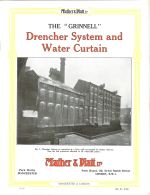 |
| 1931 - Petrol Driven Fire Pump | A fully automatic petrol driven fire pump delivering 680GPM at 180 feet. A gravity actuated switch starts a continuously-rated starter motor which turns the engine. Interestingly, although the brochure is clearly Mather and Platt, the details on the back page show "J. F. Tangye & Co., Manchester". | 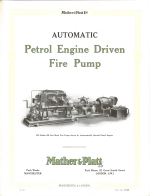 |
| 1934 - Composite Fire Doors | A range of fire doors using a steel core and clad with asbestos mill board and steel sheet for use in office buildings. Available in folding, hinged or sliding designs with or without wired glass windows. | 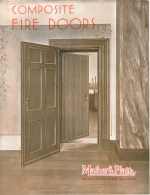 |
| 1934 - Rolling Shutters | A range of manual or electrically operated rolling shutter doors for use in warehouses, carriage sheds, boiler houses, etc. The advantage of rolling shutters is that they open vertically and require no clearance inside or outside. | 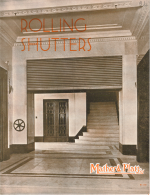 |
| 1934 - Grinnell Quartzoid Bulb Sprinkler | "A product of scientific research and of nearly half a century of practical experience" is how the Quartzoid bulb sprinkler is introduced. This leaflet explains how the new bulb type sprinkler works and how it is resistant to frost, corrosion and sea water. Note the ridge around the centre of the bulb: a feature that has disappeared on later bulbs. | 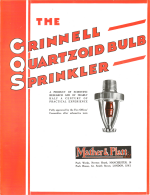 |
| 1935 - Mulsifyre | The Mulsifyre system is designed to extinguish fires involving flammable liquids. Under normal circumstances, water is inappropriate for this purpose as the oil floats on the water and continues to burn. The Mulsifyre system uses a series of open nozzles to create a fine spray of water that turns the surface of the oil to a temporary emulsion that cannot sustain the fire and so it is extinguished. The booklet uses the term "inflammable" which is deprecated today because of its ambiguity. | 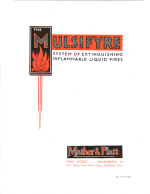 |
| 1936 - Grinnell System | This comprehensive booklet explains the benefits of the Grinnell sprinkler system and contains many photographs of buildings around the world that are protected by sprinkler installations. Some of those listed are Shell-Mex in London, Lewis's stores in Manchester and Birmingham, Earl's Court, Morris Motors in Cowley and municipal buildings, offices and warehouses in India, Estonia, France and Italy. | 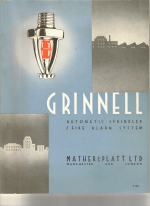 |
| 1937 - Quadruple Acting Steam Pump | This steam pump is intended for use as a fire pump. When a sprinkler operates, the pressure drop in the pipework automatically opens the steam valve and starts the pump. The pump has no dead centre and so can start up with certainty. However, regulations at the time demand that a pump be "in constant movement or must be so arranged that it automatically works a few strokes every four hours". Each pump in the range had an ordering codeword: Tiger, Deer, Sheep, Hyena and Lion. | 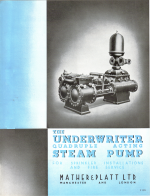 |
| 1937 - Electrically Driven Booster Pump | The purpose of the booster pump was to augment the main water supply pressure when this was insufficient to give fire-fighting pressure at the top of a building. The pump is set to start if the pressure in the sprinkler main falls below 25psi at the top-most sprinkler. The motor is switched on using a gravity switch and various chains and mechanisms to allow a slow start-up using a variable resistance. | 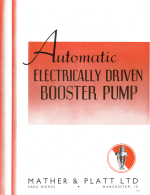 |
| 1939 - Cast Iron Tanks | A spin-off from the fire engineering products was the range of cast iron tanks. The range was a complete set of machined and drilled components in standard sizes that could be assembled on site and fitted into existing buildings if necessary. The range comprised wall plates, base plates, corners and outlets that could be bolted together into any required shape or size. The tanks were frequently used for storing water for fire sprinkler systems but also used for general water storage in offices, department stores and breweries. | 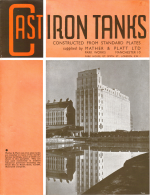 |
| 1939 - Simplex Chemical Fire Extinguishers | A leaflet that explains the benefits of the soda-acid extinguisher and announces an improved top cap that "incorporates a relief valve that entirely prevents the contents 'dribbling' from the nozzle, through changing temperature.". The range of extinguishers was available in various finishes and in any of 30 colours to match interior decoration. Standard finishes include polished and oxidised copper, imitation grained oak or mahogany. | 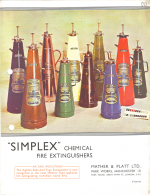 |
| 1940 - Multiple Jet Sprinkler | This system is designed to secure an even distribution of water despite the presence of obstructions, whether these are due to the design of the building or the nature of its contents. Water is discharged simultaneously from a pre-determined number of sprinklers, varying according to the design and contents of a protected building, whenever fire causes one or more of a series of automatic controls to operate. Usually deployed in high-risk buildings such as tanneries, weaving mills, linoleum factories, etc. | 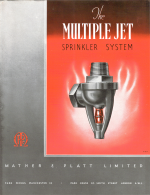 |
| 1940 - Armoured Fire Doors | A new range of armoured fire doors using steel sheathing over a solid wooden core. An improvement on the previous all-metal doors that were subject to warping in a fire and that also conducted heat from one side of the door to the other. | 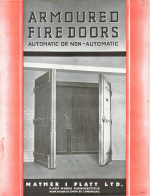 |
| 1940 - Diesel Driven Fire Pump | It appears that technology has moved on with the introduction of a fully automatic diesel driven fire pump to perhaps replace the earlier petrol one. The engine has a decompressor device so that cranking the engine is easier and it does not use heaters or cartridges that could be prone to failure. Usually installed with a Mulsifyre system, the "Medivane" pump can deliver up to 1000GPM. | 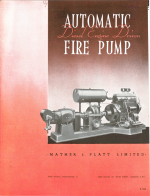 |
| 1940 - Venturi Isolating Link | The purpose of the isolating link is to isolate one source of water supply from another and to avoid contamination of the main supply with non-potable water. The isolator allows rapid use of the secondary supply when the town's main is unavailable as "in the case of an air raid". | 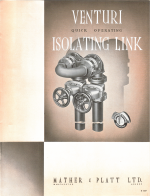 |
| 1940 - Interlocking Key | This device is incorporated into a standard stop valve so that the key cannot be removed unless the valve is in the fully open position. The device also requires a special key to avoid the valve being closed in error. | 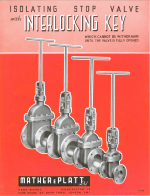 |
| 1941 - Sprinkler Bulletin | No 169 in a series of quarterly bulletins, this edition expounds the benefits of fire sprinklers and is "a critical analysis of two years under air raid conditions". Note the gothic font used for the title with clear German undertones. | 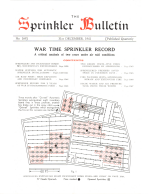 |
| 1941 - Extinguishing the Incendiary Bomb | Header ARP, this leaflet goes on to explain that the Simplex "soda-acid extinguishers will counter the action of the ordinary incendiary bomb if used promptly and in accordance with the maker's instructions". Using cross-sectional drawings, the leaflet describes the internal components of the bomb and explains how the extinguisher works. | 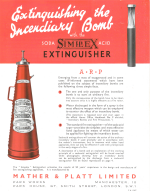 |
| 1941 - The Accelerator | The Accelerator is an automatically operating water valve that is actuated when a control sprinkler operates. It can be used in Mulsifyre and other dry pipe systems. | 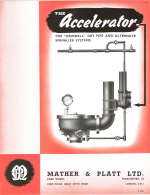 |
